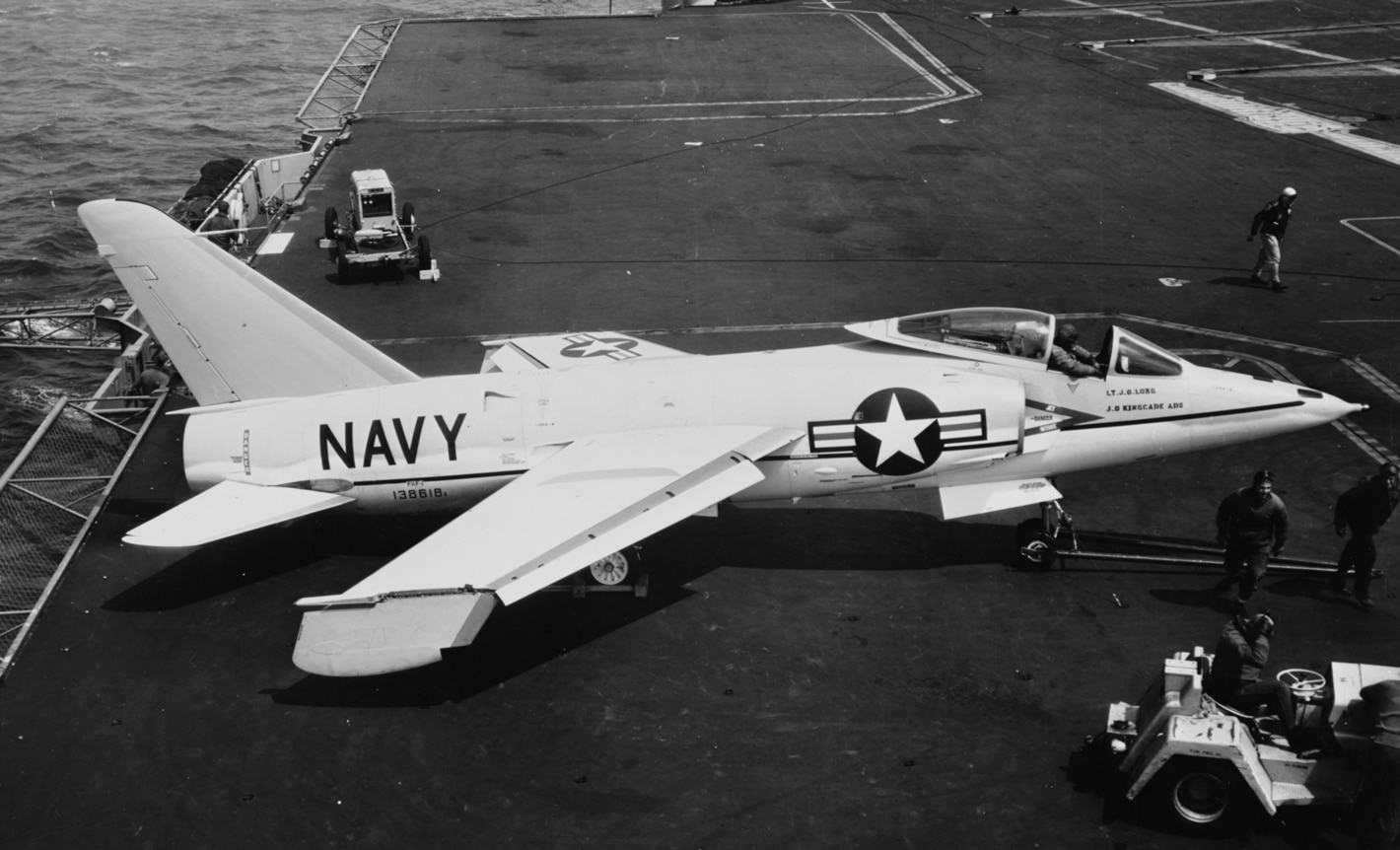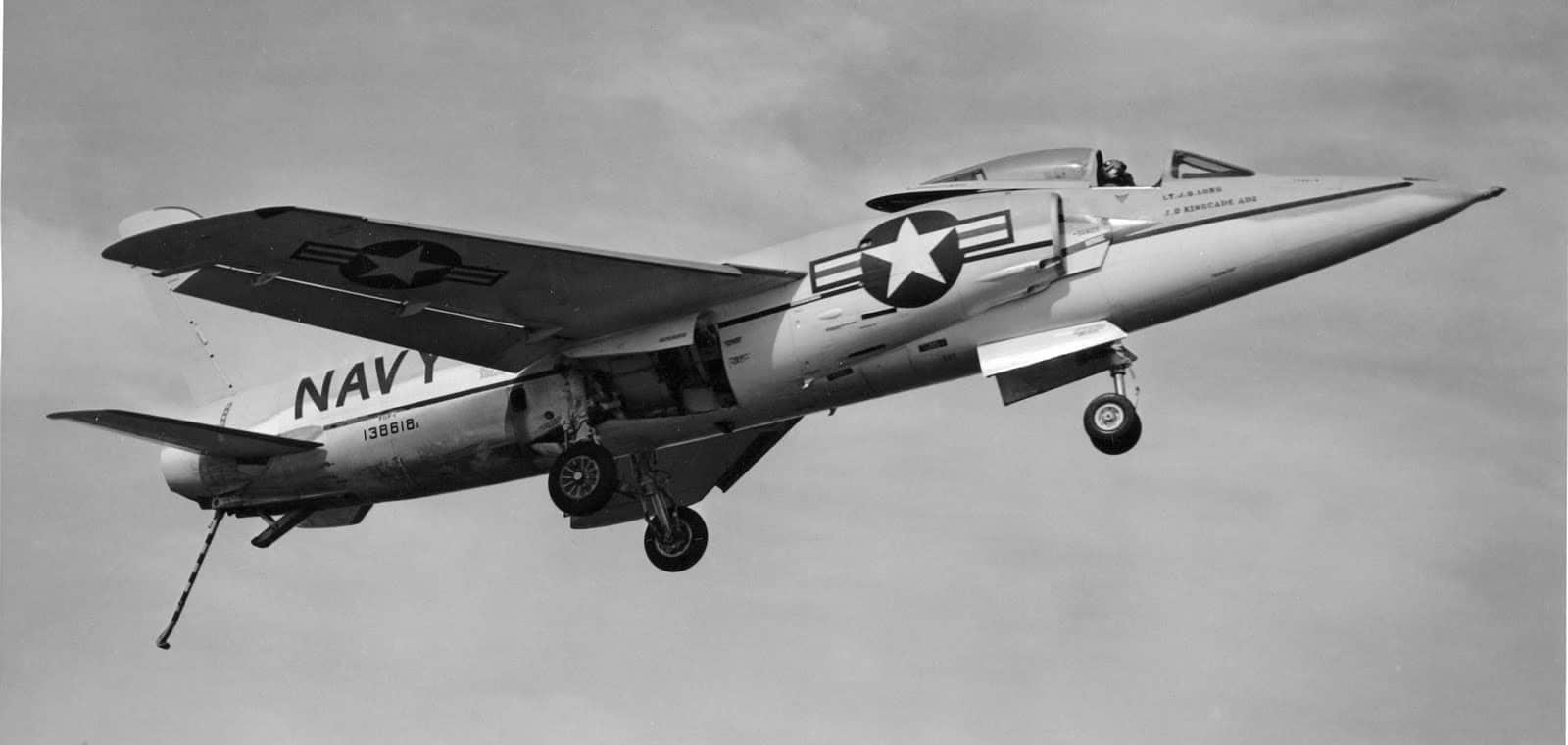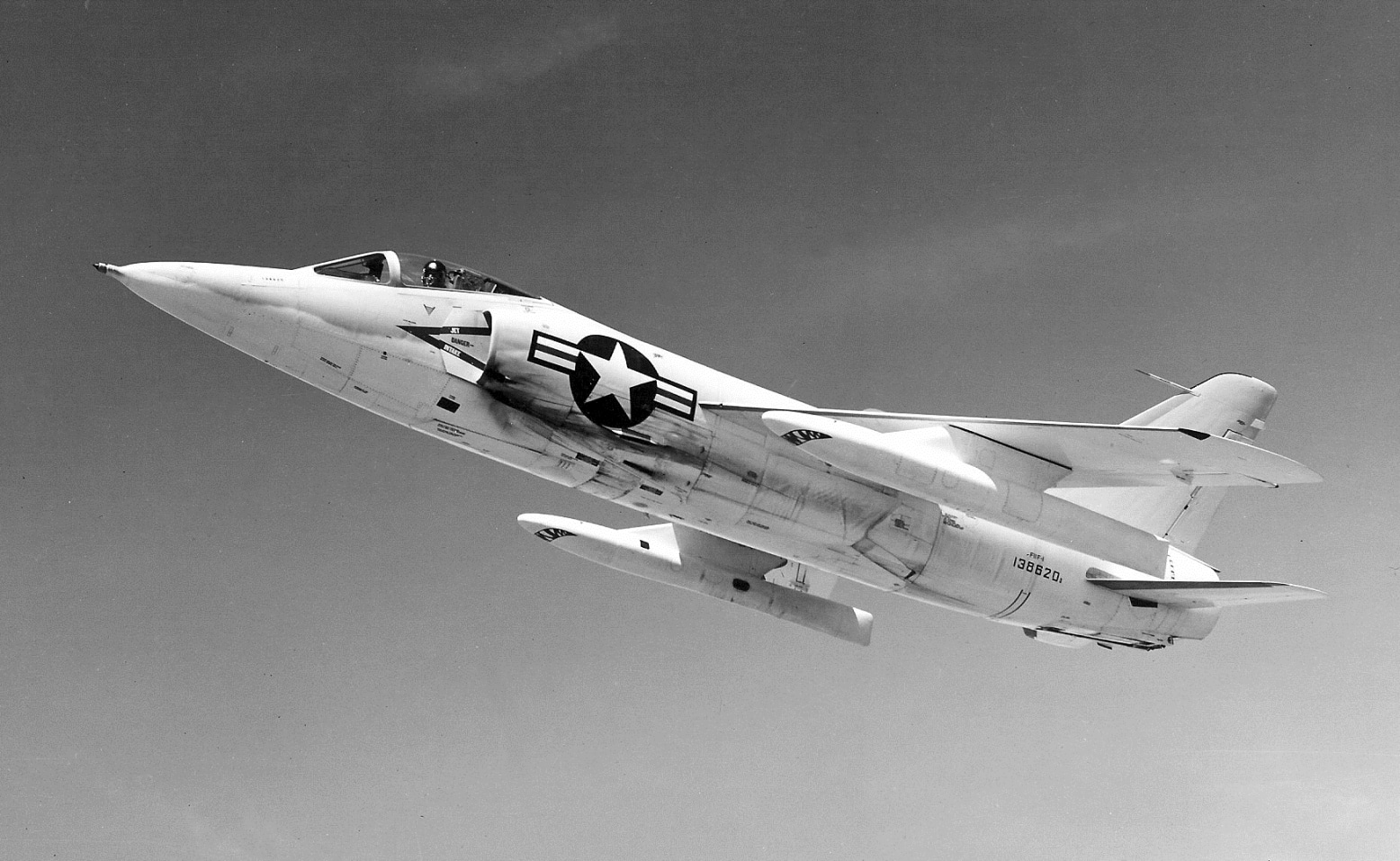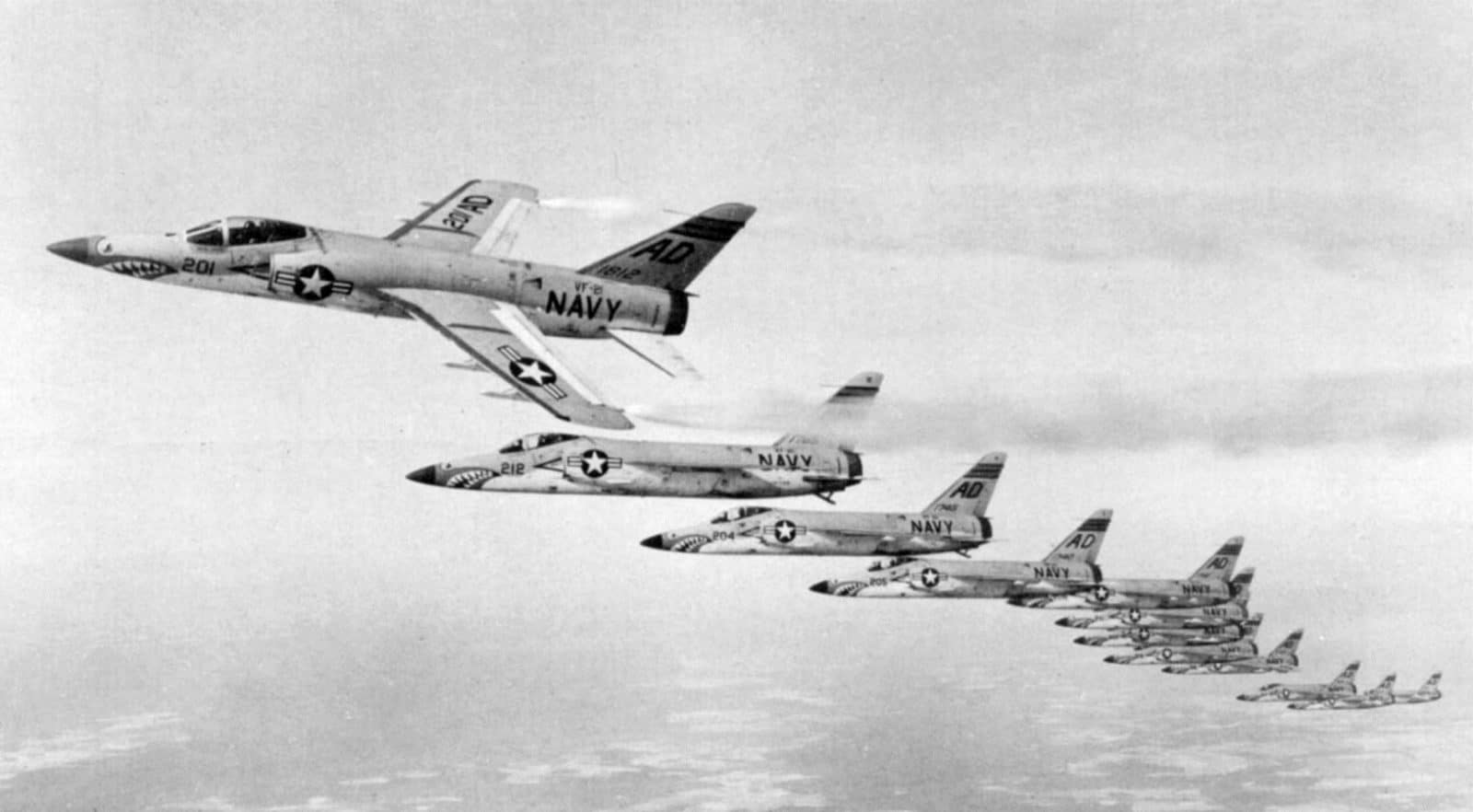The Tiger Was Ahead of its Time, for a Time, But Time Caught Up Quickly
On 8 March 1957, United States Navy Attack Squadron ONE FIVE SIX (VA-156) Iron Tigers accepted the first Grumman F11F-1 Tiger aircraft to enter service. The Tiger came along at a time when supersonic speeds were suddenly a requirement and Grumman did indeed deliver its first carrier-based supersonic fighter. With advanced features like full-span leading edge slats, roll-control spoilers instead of ailerons, all-moving horizontal stabilizers, and area-ruled fuselage design, the Tiger was, at the time of its introduction, in many ways ahead of its time.

Developed From Another Legendary Grumman Cat
At first envisioned as an improved F9F-6/7 Cougar, the resulting design and the refinements made during the development process yielded a completely different aircraft. Ironically, the Tiger’s service life was much shorter than the Cougar’s.

Close But Second to the Skyray
Even though on July 30th 1954 the prototype Tiger first flew without the afterburning engine for which it was designed, it nearly reached supersonic speeds on its maiden flight. When the second prototype flew with the afterburning engine, the Navy had its second supersonic aircraft (the Douglas F-4D Skyray was the first). The aircraft received the new designation F11F-1 in April of 1955.

Headed to The Fleet on The Boat
Carrier suitability trials began on April 4th 1956. The carrier Forrestal (CV-59) hosted the Tiger for trial arrested landings and catapult launches. After successfully completing trials, the aircraft went on to equip several Navy squadrons. The Navy operators of the F11F-1 Tiger were VF-21 Freelancers and VF-33 Astronauts in the Atlantic Fleet and VA-156 Sundowners (VF-111 from January 1959), VF-24 Renegades (VF-211 from March 1959), VF-51 Screaming Eagles, VF-121 Pacemakers, and VF-191 Satan’s Kittens in the Pacific Fleet. Tigers operated from the Essex-class carriers Intrepid (CV-11), Hancock (CV-19), Bon Homme Richard (CV-31), Shangri-La (CV-38), and the Forrestal-class carriers Forrestal (CV-59), Saratoga (CV-60), and Ranger (CV-61).

Up Against Two Legends
The last Tiger was delivered to the Navy on January 23rd 1959. The aircraft only lasted four years in front-line service. Unfortunately its performance was vastly inferior to both the Vought F-8 Crusader and the McDonnell F-4 Phantom II, both of which were being delivered to the Navy in roughly the same timeframe. The Tiger’s J65 engine also proved unreliable. Coupled with limited range and insufficient endurance, the Tiger was craned off all carrier decks by the end of 1961. The Navy cancelled all orders for the F11F-1 and a proposed reconnaissance version (the F11F-1P) on the books. Only 199 Tigers were built.


I was a member of the F11 Tiger test team at Grumman for a long time. Worked on solving the 20 mm links and shell casings flight test and spent most of 1956 at Edwards AFB with the Super Tigers (J 79 engines ) and was there when ” gorgeous” George Watkins set the zoom climb altitude record. Was test engineer for Corky Meyer when we did the first contract spin demo at PAX River and commuted weekly from Bethpage with Corky flying a G-21 Goose as our taxi. We tried to sell the F11 vs. the F104 and didn’t convince the Air Force. The Germans bought the F104 and should have bought the F11.